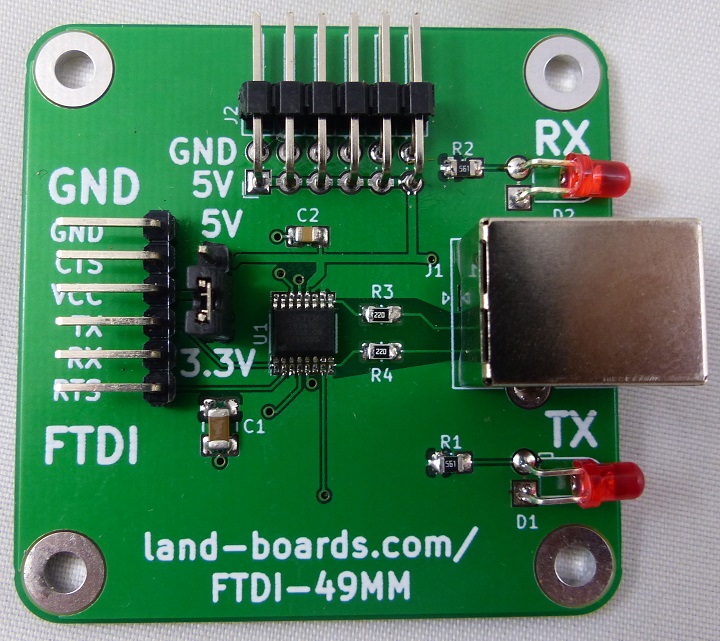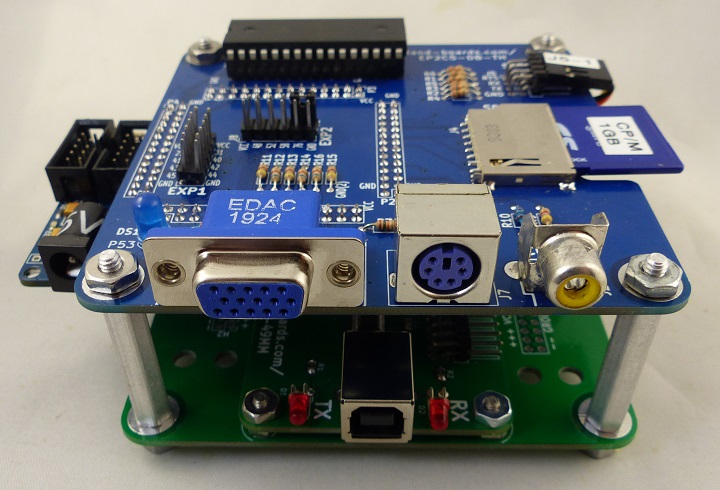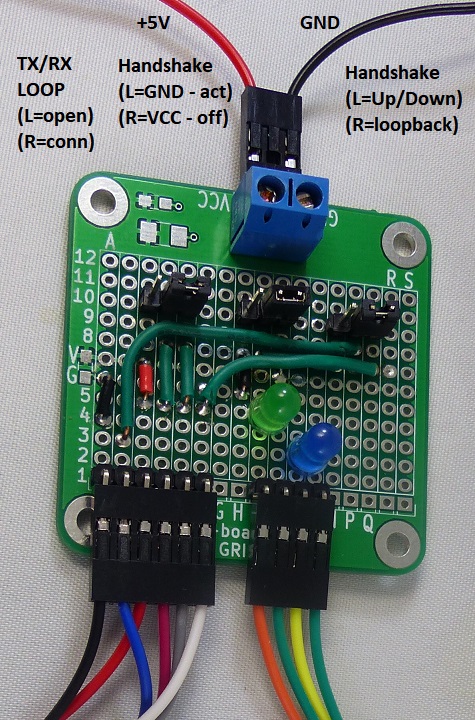Difference between revisions of "FTDI-49MM"
Jump to navigation
Jump to search
Blwikiadmin (talk | contribs) |
Blwikiadmin (talk | contribs) |
||
| Line 63: | Line 63: | ||
** Does not require 5V Power Supply (used for [[OPTOUSB]] card) | ** Does not require 5V Power Supply (used for [[OPTOUSB]] card) | ||
* Test card | * Test card | ||
| + | * Plug in USB to computer | ||
| + | ** Should hear Windoze detect sound | ||
| + | ** Use Device Manager to determine which COM port is used | ||
* Run puTTY | * Run puTTY | ||
** Baud rate = 115,200 baud | ** Baud rate = 115,200 baud | ||
** Hardware handshake RTS/CTS | ** Hardware handshake RTS/CTS | ||
| + | ** COM port from Device Manager | ||
* Jumper Settings - Normal operation | * Jumper Settings - Normal operation | ||
** Left jumper in right position (loopback data) | ** Left jumper in right position (loopback data) | ||
Revision as of 15:26, 14 May 2021
Contents
Features
- FT230X USB-to-FTDI Serial IC
- USB B connector (not micro or mini, but the beefy USB B connector)
- FTDI compatible pinout
- 3.3V or 5V selection jumper
- Header for 5V power distribution
- Rx and Tx LEDs
- (4) 4-40 mounting holes
- Mounts to 95mm to 45mm adapter
- Stacks up with standoffs for use with other 95mm cards
Headers/Jumpers
5V/3.3V Jumper
- Select 5V or 3.3V signal levels on FTDI connector
- 5V out on FTDI connector VCC pin
FDTI Connector
- GND
- CTSn
- VCC
- TX
- RX
- RTSn
USB Connector
- USB B Connector
Stackup with EP2 FPGA card
- Top to bottom of stackup
- EP2C5-DB
- Cyclone_II_EP2C5_Mini_Dev_Board Card
- FTDI-49MM - (this card)
- CARRIER95TO49MM
Pinout
- GND
- CTS* (in)
- VCC
- TX (out)
- RX (in)
- RTS* (out)
Card Test
- Connect test card to UUT
- Connect FTDI - black = ground
- Does not require LEDs connections
- Does not require 5V Power Supply (used for OPTOUSB card)
- Test card
- Plug in USB to computer
- Should hear Windoze detect sound
- Use Device Manager to determine which COM port is used
- Run puTTY
- Baud rate = 115,200 baud
- Hardware handshake RTS/CTS
- COM port from Device Manager
- Jumper Settings - Normal operation
- Left jumper in right position (loopback data)
- Middle jumper in left position (handshake = active/ground)
- Right jumper in right position (loopback handshake)
- Type on keyboard and verify it returns data
- Verify both LEDs on the card light
- Jumper settings - Test Tx/Rx isolation
- Move left jumper to left position
- Type data nothing should come back (verify RX LED only lights)
- Move left jumper to right position
- Jumper settings - Test RTS/CTS
- Move right jumper to left position (handshake controlled by middle jumper)
- Type and characters should return
- Move middle jumper to to right position (hardware handshake off)
- Type and nothing should go through
- Move middle jumper to to left position (hardware handshake on)
- Characters that were buffered should come in at once



